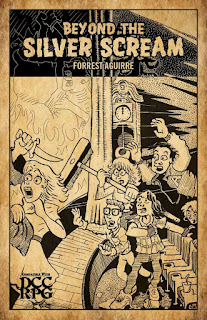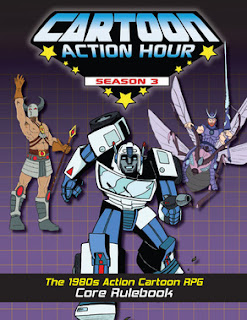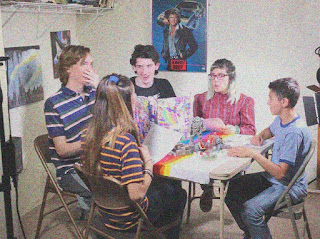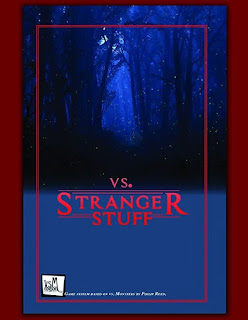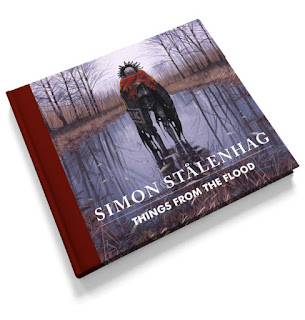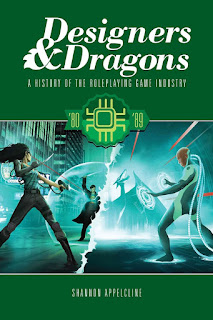 |
| Image: Pixabay. |
This is post number 20 in the series “30 Days of Tales from the Loop,” a celebration of the game set in an 80s that never was.
One of the ways that Tales from the Loop presents adventures to the players is in the form of the Mystery Landscape. This is a sandbox-style set of partially-developed adventure hooks that the gamemaster can develop either separately or jointly over time, letting the players decide what to investigate and when.
The Tales from the Loop rulebook comes with a Mystery Landscape made up of six locations, each with an associated non-player character. Today I’m providing two locations of my own to start out a mini-Mystery Landscape set at school.
School Bus 102
School Bus number 102 is one of a dozen used by the school, and it looks just like the others. It’s boxy, it’s dark yellow, and its paint has seen better days. But lately, the bus has started to exhibit unusual phenomena. It all started about two months ago, after the bus broke down and needed significant repairs. After a week in the shop, the bus returned to service. At first, only its driver noticed anything odd.
The Truth
Under the hood, School Bus 102 has got a little something extra now: engine parts that originated from the Loop facility. The important thing about these parts isn’t their mechanical function, but the fact that they absorbed significant amounts of poorly-understood subatomic particles during their time near the Gravitron. As a result, the bus is prone to reality-bending mishaps.
These mishaps quickly increase in frequency and magnitude. One possibility for their final manifestation is a journey back in time for the bus and everyone aboard. Others include shifting to a parallel universe, going out of phase with physical matter, or getting out of sync with the rest of the world in such a way that people outside seem to be moving in slow motion.
Hooks
- The Kids go on a field trip in the bus.
- Something strange happens on the ride home—such as everyone losing their hearing for seven minutes.
- Mrs. Gustafsson [Booker], the bus driver, is friends with a Kid’s parent, and mentions something strange happening related to the bus.
Countdown
- A student (perhaps one of the Kids) reports an item missing that they were certain they had on the bus. Later, the item shows up somewhere in the school.
- A Kid overhears Mrs. Gustafsson complaining that she sometimes hears a humming sound coming from under the bus’s hood.
- While waiting for the bus one morning, one of the Kids sees it approach, but when they blink, it’s gone. Then it approaches again without incident.
- While either driving to or from school—or perhaps on a field trip—the bus travels back in time to the early 1970s. The shock of the journey incapacitates Mrs. Gustafsson, leaving the Kids to find a way back to the future without her help.
Ulla Gustafsson [Thelma Booker]
“You kids be quiet back there! Don’t make me pull over!”
Mrs. Gustafsson is a heavyset older woman wearing a flower-print dress and large glasses. Traffic makes her grumpy, and she sometimes can’t help but take out her anger on the kids by yelling. Mrs. Gustafsson suffers from a variety of health problems, including hypertension and diabetes, but she never misses a day of work. Her two biggest pet peeves are flat tires and kids being loud on the bus.
Science Class
Mr. Hansson’s [Miller’s] science class is even more popular with the students this year than it was last year. People liked Mr. Hansson’s teaching style before, but recently it seems he’s gotten even more funny and offbeat. And his deadpan delivery of hilarious non-sequiturs takes his humor to a new level.
Mr. Hansson never even has to refer to a book when he’s teaching, expounding at length purely from memory about topics such as genetics, chemistry, and high-energy physics. Kids often ask him questions related to the Loop, and he always takes the time to answer them.
The Truth
Sometime last summer, the original Mr. Hansson was replaced by his duplicate from a parallel Earth. The duplicate plans to replace other adults with their alternate-Earth counterparts so they can take control of this Earth’s Loop and reach other, even more divergent, Earths.
Because the parallel Earth is more advanced scientifically than ours, the new Mr. Hansson sometimes slips up and teaches things that are not yet known here. If questioned, Hansson claims that he is merely extrapolating because he is such a science fiction aficionado. (Clever Kids can trip him up on this, as he truly has little knowledge of this world’s science fiction.)
Hooks
- A student starts a rumor that Mr. Hansson is really a robot.
- Someone’s parents talk to each other about how odd Mr. Hansson has been since the summer.
- An adult in town mentions seeing Mr. Hansson near the one of the Loop facilities several times in the last month.
Countdown
- Mr. Hansson makes a scientific mistake in class and covers for it very poorly.
- Another teacher starts talking strangely, just as Hansson does.
- One of the Kids (or another student) finds written evidence of Hansson’s interest in the Loop.
- More adults, including some not at the school, start acting like Hansson.
- One or more Kids receive a garbled message from the original Mr. Hansson. He is on the other Earth and is trying to warn people of the duplicate’s plan.
Rolf Hansson [Ronald Miller]
“Why do you need a hall pass? Why don’t you just teleport to the bathroom?”
The duplicate Mr. Hansson is a slim man in his 30s with short hair, black-framed glasses, and a plain grey suit and thin black tie. He speaks in a monotone and is always calm and unflappable. The duplicate really has no sense of humor at all, and what students interpret as a wry wit is really his matter-of-fact utterings of things that are true on his Earth that are not true of ours.
Hansson keeps a device in his briefcase that allows him to travel between his Earth and this one. The device—which looks like a black metal donut covered in multicolored lights—can shift everyone who is touching it, but requires a full day to recharge before it is usable again.

